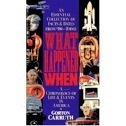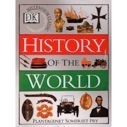A Regency Era Timeline 1824 in progress
English Historical Fiction Authors
Several of the followers of The Things That Catch My Eye blog will know that I also blog over at English Historical Fiction Authors.
The EHFA has a different blog post everyday supplied by authors like myself in the field. The reason to draw your attention to the EHFA today, is that the one year anniversary of the website/blog will be this weekend and there are approximately 20 books being given away in honor of that event. Just post a comment on Saturday the 22nd, or Sunday the 23rd at the site.
Timeline
Each time I start a year, I have already compiled a list, months ago with about 6000 entered of what happened from 1788 to 1837. My first step now (It took several trials to get this down to a science) is to cut out the specific year I will work on and paste it into its own spreadsheet to work with. When I worked on the entire spreadsheet, sometimes inserting a line, with all the graphics I had begun to place, took a long time. Working on each year alone, is a lot faster.
With the year separated out, I now turn to my book sources,
The Timetables of History by Grun and Stein
Chronology of CULTURE by Paxton and Fairfield
 What Happened When by Carruth.
What Happened When by Carruth.
 , History of the World. A beautiful Dorealing Kindersley book.
, History of the World. A beautiful Dorealing Kindersley book.
I now and diligently look through each of these to find entries that I did not come across on the internet, and other printed lists. It is possible that there are places that have more listings for each year. I have not found them. And when you go to the Timelines at the Regency Assembly Press page, there you will see all the graphical references as well. Something that I did not find anywhere else.
Here is the start of 1824:
Year
Month Day
Event
1824
Jan 1
The Camp Street Theatre opened as the first English-language playhouse in New Orleans.
1824
Jan 8
William Wilkie Collins, English novelist (Woman in White), was born.
1824
Jan 8
Tom Spring defeated Jack Langan in a British championship boxing match that lasted 2½ hours.
1824
Jan 21
Thomas “Stonewall” Jackson, Confederate General, was born.
1824
Jan 22
A British force was wiped out by an Asante army under Osei Bonsu on the African Gold Coast. This was the first defeat for a colonial power.
1824
Jan 26
Edward Jenner, discoverer of vaccination, died.
1824
Feb 4
J.W. Goodrich introduced rubber galoshes to public.
1824
Feb 9
Anna Katharina Emmerick (b.1774), a sickly, virtually illiterate German nun, died. Her gory visions of Jesus’ last hours of suffering before his crucifixion drew pilgrims to her bedside in the years before her death. In 2004 she was beatified by Pope John Paul VI.
1824
Feb 10
Simon Bolivar was named President by the Congress of Peru.
1824
Feb 14
Winfield Scott Hancock (d.1886), Major General (Union volunteers), was born.
1824
Feb 23
Lewis Cass Hunt (d.1886), Brig General (Union volunteers), was born.
1824
Feb 28
Charles Blondin, tightrope walker, was born.
1824
Mar 2
Bedrich Friedrich Smetana (1884), Czech, Bohemian composer (Bartered Bride, Moldau), was born.
1824
Mar 2
In the Supreme Court case of Gibbons v Ogden held that the power to regulate interstate commerce was granted to Congress by the Commerce Clause of the Constitution. The Court found that New York’s licensing requirement for out-of-state operators was inconsistent with a congressional act regulating the coasting trade. Gibbons had hired Cornelius Vanderbilt as captain of his boat, which operated under a federal license.
1824
Mar 5
Elisha Harris, U.S. physician, founder of the American Public Health Association, was born.
1824
Mar 5
James Merritt Ives, lithographer for Currier and Ives, was born.
1824
Mar 7
Meyerbeer’s opera “Il Crociati in Egitto,” premiered in Venice.
1824
Mar 9
Leland Stanford, railroad builder and founder of Stanford University, was born in what was then Watervliet, New York (later the town of Colonie).
1824
Mar 11
The U.S. War Department created the Bureau of Indian Affairs. A lifelong friend and trusted aide of Ulysses S. Grant, Ely Parker rose to the top in two worlds, that of his native Seneca Indian tribe and the white man’s world at large. He went on to become the first Indian to lead the Bureau.
1824
Mar 12
Gustav Robert Kirchoff, physicist, was born in Prussia.
1824
Mar 26
1st performance of Beethoven’s “Missa Solemnis.”
1824
Apr 17
Russia abandoned all North American claims south of 54’ 40’.
1824
Apr 19
George Gordon, (6th Baron Byron, b.1788) aka Lord Byron, English poet, died of malaria in Greece at Missolonghi on the gulf of Patras preparing to fight for Greek independence. In 1999 Benita Eisler published the biography “Byron: Child of Passion, Fool of Fame.” In 2002 Fiona MacCarthy authored “Byron : Life and Legend.” In 2009 Edna O’Brien authored “Byron in Love.”
1824
Apr 27
William Richard Bexfield, composer, was born.
1824
May 7
The Ninth Symphony by Beethoven had its premiere. The “Ode to Joy” lyric was originally written by Friedrich von Schiller as the “Ode to Freedom.”
1824
May 8
William Walker, president of Nicaragua, was born.
1824
May 16
Edmund Kirby-Smith, educator and soldier, was born. He was a Confederate general in the western theater.
1824
May 29
Cadmus Marcellus Wilcox, Major General (Confederate Army), was born.
1824
Jun 8
A washing machine was patented by Noah Cushing of Quebec.
1824
Jun 10
Caesar Augustus Rodney (v.1772), US Attorney General (1807-1811) and nephew of US Judge Caesar Rodney (1728-1784), died in Buenos Aires. He served as a US Senator from Delaware (1822-1823).
1824
Jun 16
The Society for the Prevention of Cruelty to Animals was formed at Old Slaughter’s Coffee House in London under the direction of Arthur Broome.
1824
Jul 20
Alexander Schimmelfennig, Brig. General Union volunteers, was born in Prussia.
1824
Jul 20
Marc Brunel (55) was appointed as engineer for the Thames Tunnel Company. He hired his son, Isambard Brunel, as his assistant. Brunel senior, a royalist, had fled the French Revolution to become, briefly, official engineer to the city of New York, and then, having settled in London, a consultant engineer to the Royal Navy. Educated and trained in both French and English schools and workshops, Brunel junior served his practical apprenticeship assisting his father in the building of the first tunnel under the Thames, which later carried the Underground between Wapping and Rotherhithe.
1824
Jul 27
Alexandre Dumas fils, French playwright, novelist (Camille), was born.
1824
Jul 30
Gioacchino Rossini became manager of Theatre Italian in Paris.
1824
Jul
The Richmond [Virginia] Light Artillery changed its name to the Richmond Fayette Artillery in honor of the Marquis de La Fayette.
1824
Aug 15
General Lafayette returned to the US under an invitation from Pres. Monroe. Political ribbons were printed in for the 1st time in large quantities to celebrate his US tour.
1824
Aug 15
Freed American slaves formed the country of Liberia.
1824
Aug 24
Simon Bolivar’s army beat the Spanish in Peru in the Battle at Junin.
1824
Sep 4
Anton Bruckner, composer and Wagner disciple, was born in Austria.
1824
Sep 23
Captain Richard Charlton was appointed British Consul to Hawaii. He arrived in Hawaii and assumed his post in April, 1825.
1824
Oct 4
The Federal Constitution of the United Mexican States of 1824 was enacted, after the overthrow of the Mexican Empire of Agustin de Iturbide. In the new constitution, the republic took the name of United Mexican States, and was defined as a representative federal republic, with Catholicism as the official religion. A liberal constitution, established at this time, was later replaced by Santa Anna.
1824
Oct 21
Joseph Aspdin patented Portland cement in Yorkshire, England.
1824
Oct 22
The Tennessee Legislature adjourned ending Davy Crockett’s state political career. Crockett died at the legendary siege of the Alamo in 1836.
1824
Oct 23
The 1st steam locomotive was introduced.
1824
Nov 2
Popular presidential vote was 1st recorded; Jackson beat J.Q. Adams. Gen. Jackson won the popular vote followed by John Quincy Adams, William Crawford and Henry Clay. Jackson won 99 electoral votes, Adams won 84, Crawford won 41 and Clay won 37. Crawford, Treasury secretary, was accused of malfeasance. Henry Clay was denounced for passing days gambling and nights in a brothel. Clay convinced his supporters in congress to vote for Adams. The House of Representatives chose John Quincy Adams, who chose Clay for vice president. A furious Jackson proceeded to help found the Democratic Party.
1824
Nov 5
Stephen Van Rensselaer established the Rensselaer School with a letter to Rev. Dr. Samuel Blatchford, in which he asked him to serve as the first president. The first engineering college in the U.S., Rensselaer School, opened in Troy, New York, on Jan 3, 1825. It later became known as Rensselaer Polytechnic Institute.
1824
Nov 16
NY City’s Fifth Avenue opened for business.
1824
Nov 18
Franz Sigel (d.1902), Major General (Union volunteers), was born.
1824
Dec 1
The presidential election was turned over to the U.S. House of Representatives when a deadlock developed among John Quincy Adams, Andrew Jackson, William H. Crawford and Henry Clay with Jackson 32 votes shy of a majority. John Quincy Adams ended up the winner. He was reportedly the only bald-headed president.
1824
Dec 9
In the Battle of Ayacucho (Candorcangui) Peru defeated Spain.
1824
Dec 22
Chiefess Kapiolani, a Christian, defied Pele, the Hawaiian volcano goddess, and lived. Tennyson’s eponymous poem celebrated the event.
1824
Charles X becomes the new King of France.
1824
Don Juan, written by English poet George Gordon, Lord Byron, is published this same year as he dies of marsh fever at Missolonghi at age 36, in the midst of trying to help the Greeks gain their independence.
1824
Fanny Wright makes a second trip to America, right behind the Marquis de Lafayette, joining him on his visits to Thomas Jefferson and James Madison. She is a champion for women’s rights and advocates free public schools in America.
1824
Hawaii’s high chieftess, Kapiolani, hikes 100 miles to the 4,000 ft. peak of Mauna Loa and descends 500 feet into the Kilauea Volcano’s crater against her husband’s pleas, and defies the steaming lake of red-hot lava by saying “I fear not Pele”. Later in the 1840s, she will be found to have breast cancer and will undergo a mastectomy without anesthesia.
1824
Hawaii’s Kamehameha II and his wife both die of measles during a state visit to Britain on July 14.
1824
Later in the year a penal colony is founded at Redcliff, before moving upriver to the present site of Brisbane.
1824
Lord Byron dies.
1824
Nicholas I is crowned Tsar of Russia.
1824
Oxley charts the Brisbane River as far as Colleges Crossing.
1824
Robert Owen, an English reformer, advocates women’s liberation, abolition of slavery and free progressive education. He purchases the town of New Harmony, Indiana from German Lutheran Rappites, with the intention of beginning communes in England, Ireland, Mexico, and the U.S. All will fail.
1824
The book, A Narrative of the Life of Mrs. Mary Jemison Who Was Taken by the Indians in the Year 1755 When Only about Twelve Years of Age and Has Continued to Reside Amongst Them to the Present, will outsell the works of Sir Walter Scott and James Fenimore Cooper until the end of the century. It is written by Mary Jemison, age 81, who had married a member of the Delaware tribe during her captivity and whom she really did love. Her Indian captors had sided with the British during the Revolution, and later deeded land to her when they were removed to reservations.
1824
The Combination Acts are repealed in England, which stimulates the trade movement.
1824
The first Anglo-Burmese War begins, and Britain begins annexation of Burma.
1824
The first joint strike by men and women takes place by weavers at Pawtucket, Rhode Island.
1824
The first regional American cookbook is published: The Virginia Housewife by Mary Randolph, age 72. It includes recipes for turtle soup, Virginia ham, and gooseberry fool.
1824
War develops between the British and the Ashanti in the Gold Coast, aka Ghana, West Africa.
1824
The Frenchman, Eugène Delacroix, paints The Massacre of Chios. Britain’s romantic poet, Lord Byron, who has written “We are all Greeks,” has gone to Greece and dies of “marsh fever.”
1824
Britain and the U.S. negotiate a treaty establishing procedures for suppressing the slave trade, but the U.S. Senate undercuts the treaty’s powers and the British refuse to sign.
1824
In Britain, the Royal Society for the Prevention of Cruelty to Animals is founded, the first animal protection organization in the world.
1824
John Hayter painted portraits of Hawaii’s King Kamehameha II and Queen Kamamalu in London shortly before they died there of measles.
1824
Lydia Maria Child of Wayland, Mass., authored “Hobomok,” a novel of a Puritan girl who falls in love with an Indian after her fiancée is lost at sea. She later founded Juvenile Miscellany, the 1st children’s magazine in the US. She later authored “The Frugal Housewife” and “An Appeal in Favor of That Class of Americans Called Africans” (1833) and the poem: “The New England’s Boy’s Song About Thanksgiving Day” (Over the river, and through the woods…). In 1994 Carolyn Karcher authored her biography: “The First Woman in the Republic.”
1824
James Morier authored “The Adventures of Haji Bab of Ispahan,” the tale of a barber’s son who seeks his fortunes in Persia.
1824
Meyerbeer composed his opera “Il Crociato in Egitto,” with a part for the last of the great castrato singers, Giovanni Batista Velluti.
1824
The Second Bank of the United States, established by federal charter in 1791, was completed in Philadelphia by William Strickland. It was modeled after the Parthenon. From 1841-1934 it served as a Custom House. It was acquired by the National Park Service in 1939 and in 1974 became the home of the Peale portraits. The renovated museum reopened Dec 1, 2004.
1824
Rafael Garcia led the defense of Mission San Rafael against hostile Indians.
1824
Hens called Rhode Island Reds were first bred in Little Compton, R.I. They lay brown eggs and gained a regional preference.
1824
“Publish and be damned,” was exclaimed by the Duke of Wellington to Harrietta Wilson, a courtesan of note, whose publisher went trolling amongst her former beaux, offering exclusion from her memoirs for 200 hundred pounds sterling.
1824
Dean William Buckland of Oxford Univ. discovered and described the bones of the meat-eating Megalosaurus, “huge reptile.”
1824
William Moorcroft, East India Co. head of 5,000 acre horse farm at Pusa, India, arrived in Peshawar, Afghanistan, while enroute to Bukhara, Uzbekistan, to trade for horses.
1824
The Ashanti tribe in West Africa defeated the troops under Sir Charles MacCarthy. His polished skull then became a prized feature of the annual yam festival.
1824
The first company to come out with the paper milk carton was the Toronto East India Company, which developed it in 1824 due to a glass shortage.
1824
In England the first animal welfare group was founded.
1824
The Royal National Lifeboat Institution was established in England.
1824
The Mexican governor of California offered all missions for sale under a program of secularization.
1824
A Mexican General was served chiles en nogada after he threw out the last Spanish viceroy. The dish consisted of green chiles, pomegranate seeds and a white walnut sauce.
1824
Newfoundland became a British colony.
1824
The Saud family established a new capital at Riyadh.
1824-1860
Yanagawa Shigenobu II, Japanese printmaker, was active. His work included the color woodcut “Kuroho” (1832-1836).
1824-1868
Lesotho acted as a buffer between the Afrikaner’s Boer Republic and British colonial interests and supplied seasonal farm workers to both.
1824-1877
Julia Kavanagh, Irish novelist: “The slight that can be conveyed in a glance, in a gracious smile, in a wave of the hand, is often the ne plus ultra of art. What insult is so keen or so keenly felt, as the polite insult which it is impossible to resent?”
1824-1879
William Morris Hunt, artist. His work included an oil of Niagara Falls.
1824-1887
Gustav Kirchoff, German physicist, discovers that the reasons for the Fraunhoffer lines in light spectra from the sun are due to absorption of specific wavelengths of energy by elements in the gaseous chromosphere that resonate when impacted at specific energy levels. The light emitted by the excited atoms will then have characteristic markings such as the D-line of sodium.
1824-1889
(William) Wilkie Collins, English novelist. His work included the 1860 mystery: “The Woman in White.” It was later made into a TV version on both “Mystery” (1985) and “Masterpiece Theater” (1998).
1824-1892
George William Curtis, American author-editor “Heroes in history seem to us poetic because they are there. But if we should tell the simple truth of some of our neighbors, it would sound like poetry.”
1824-1907
William Thomson (Lord Kelvin), Scottish scientist-inventor, a leader in energetics. Along with Helmholtz he helped establish the principle of the conservation of energy.






